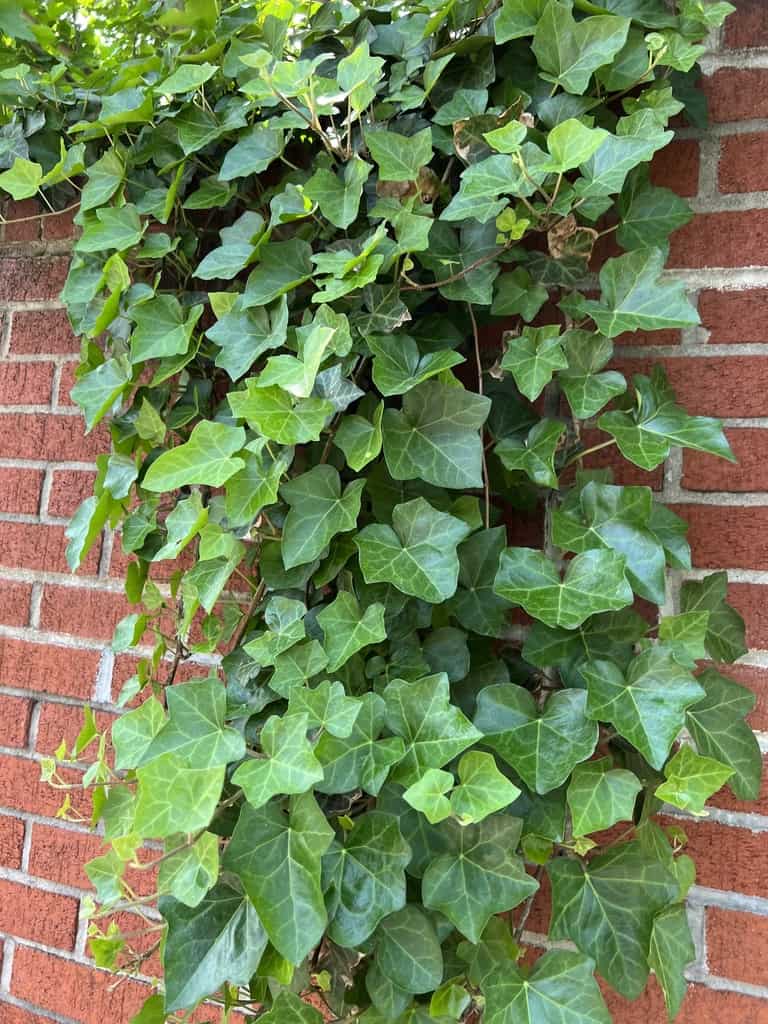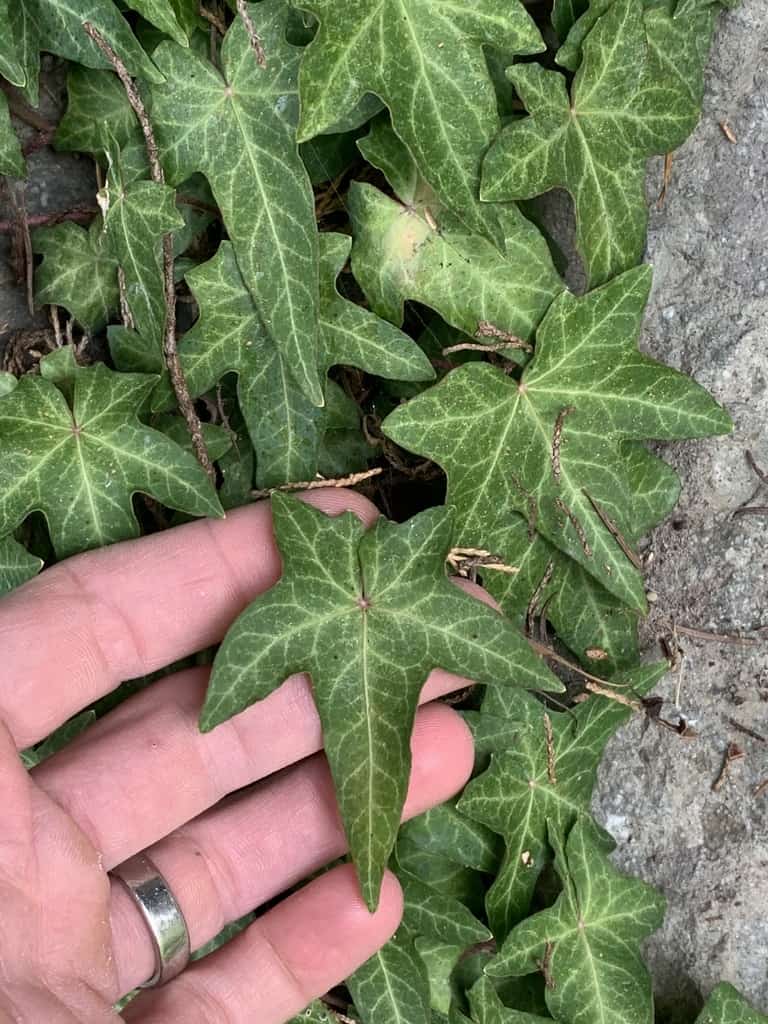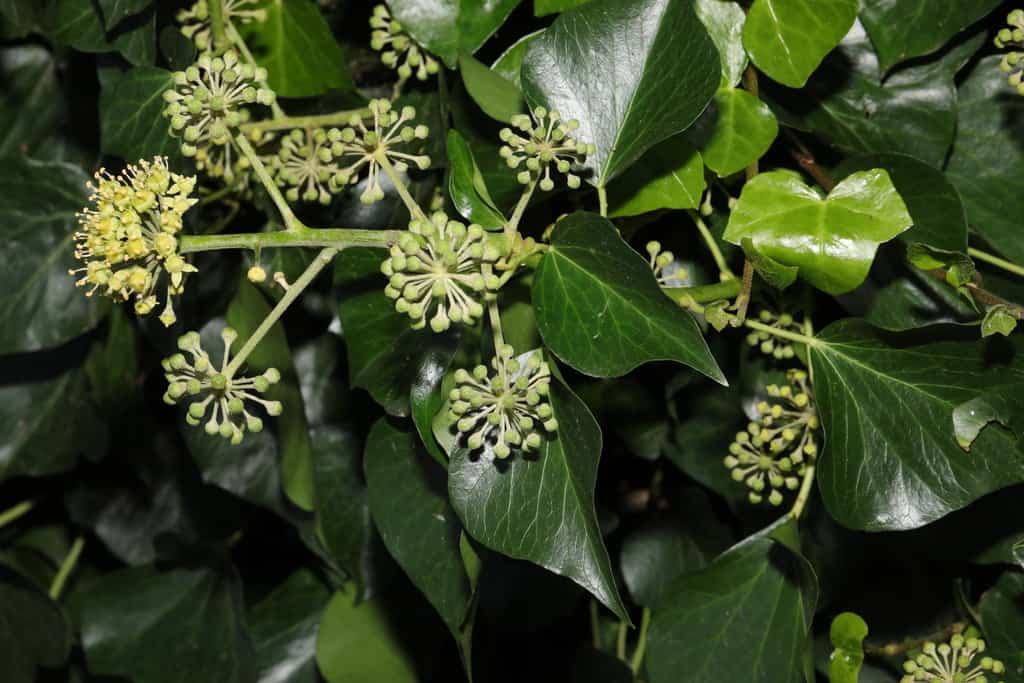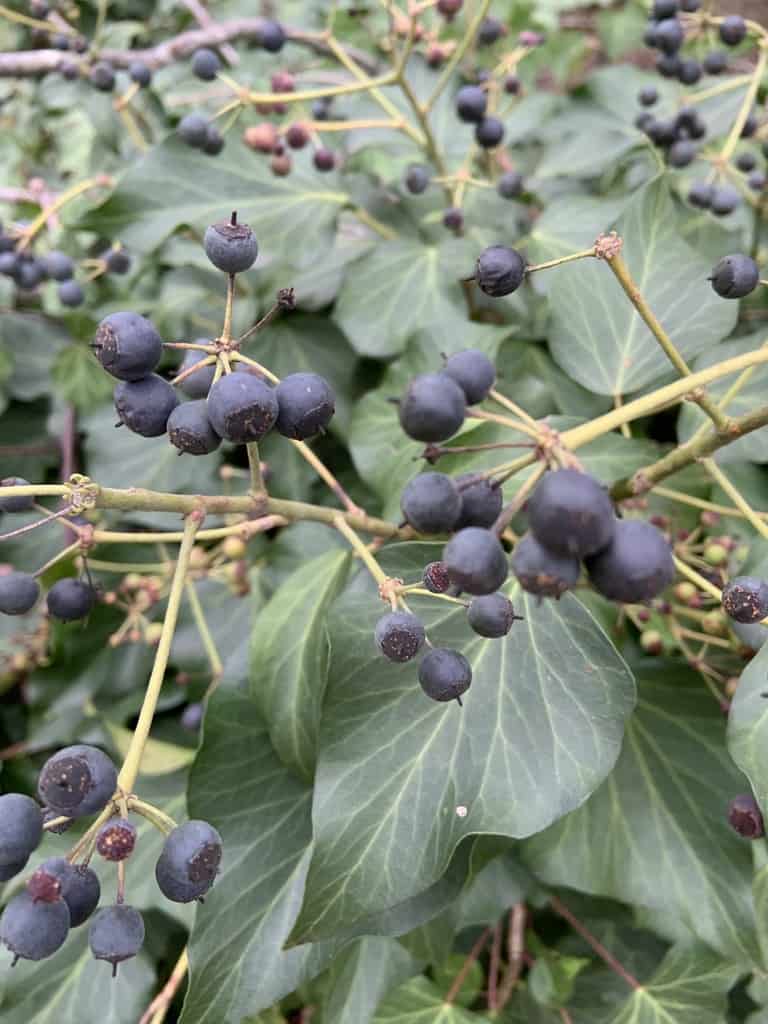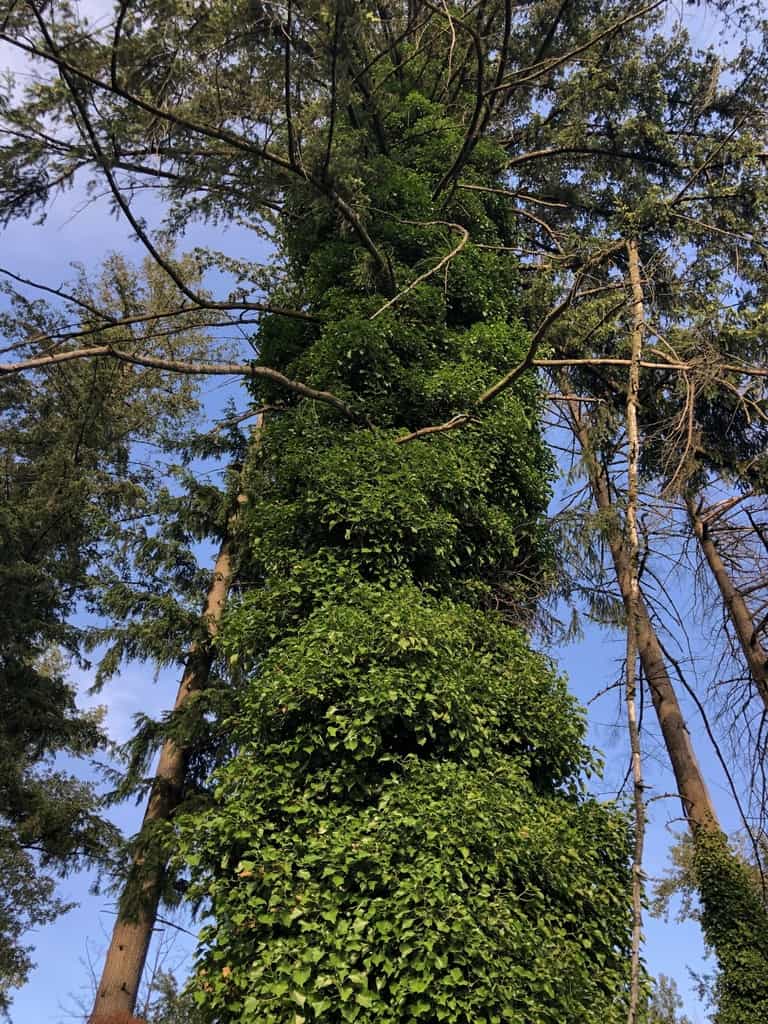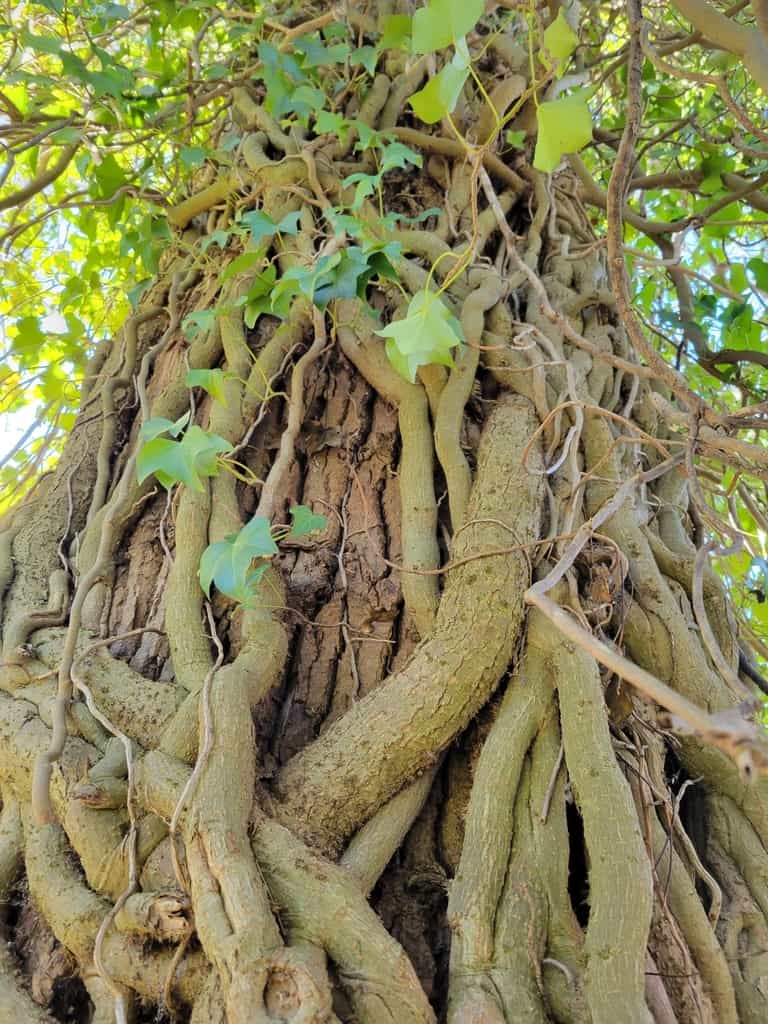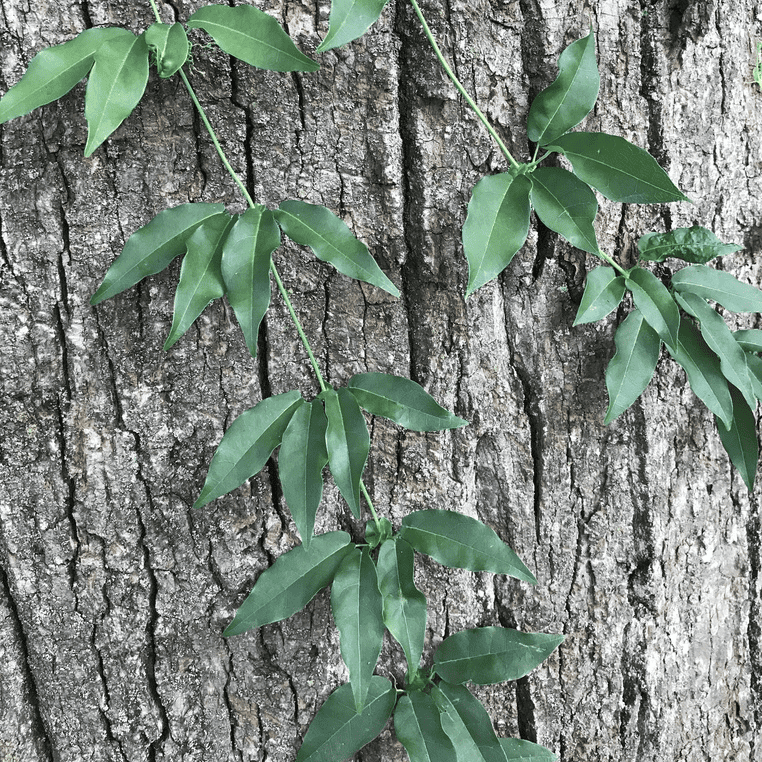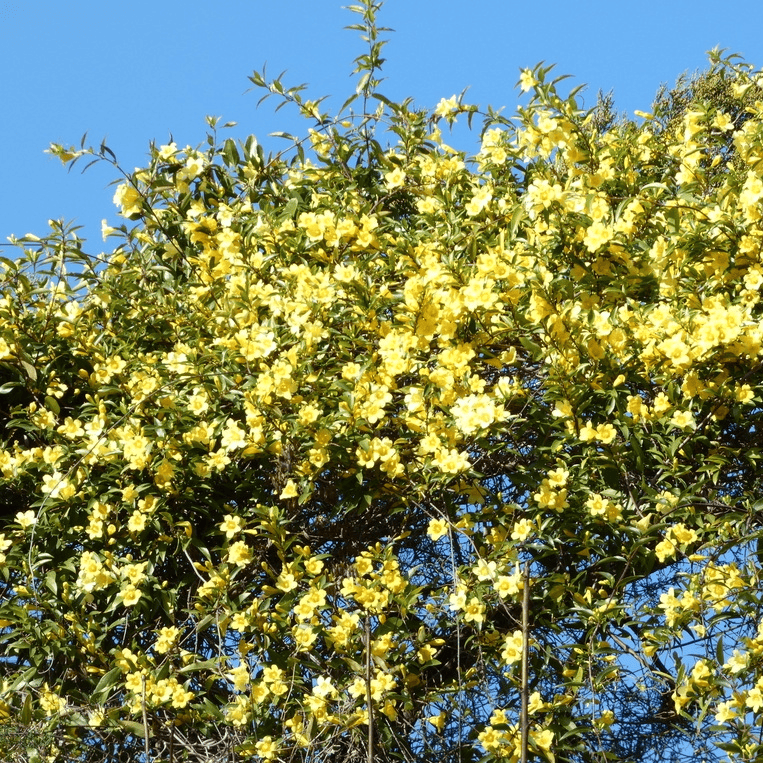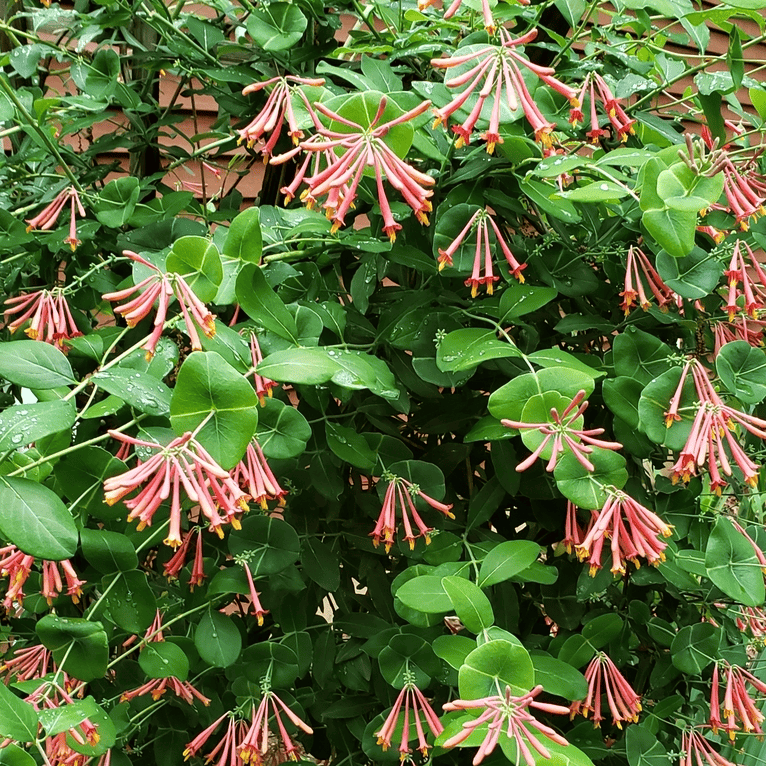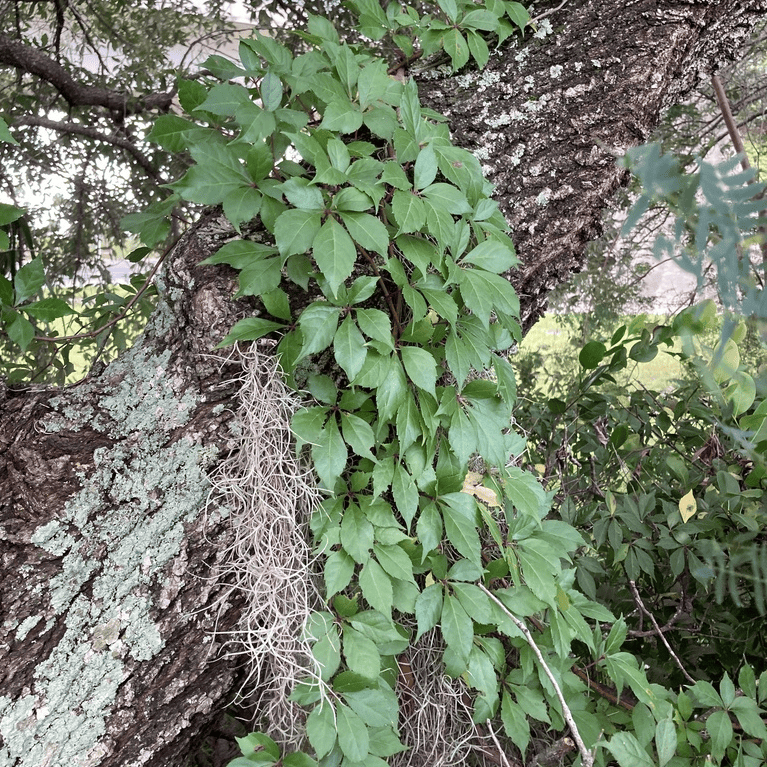This evergreen climbing vine was introduced into the U.S. from Europe, possibly by European immigrants for its ornamental appeal. It is reported to be invasive in 18 states including Louisiana. English Ivy is classified by the Louisiana Department of Wildlife and Fisheries as a Tier II invasive species defined as “currently causing moderately negative impacts on wildlife or natural communities in Louisiana”.
Outside cultivation, it occurs in forest edges, fields, hedgerows, and coastal areas. Growth is rapid, and old vines can reach 1’ in diameter. English Ivy damages trees by overwhelming and shading their foliage, which may eventually kill host trees. Heavy infestation also can make host trees top-heavy and susceptible to uprooting by strong winds. English Ivy spreads laterally as well to form dense ground cover that displaces native forbs and shrubs.
Dispersal to new areas occurs through human activity that transports stem fragments or by frugivorous birds such as Cedar Waxwing, Northern Robin, Mockingbird, European Starling, and House Sparrow. English Ivy continues to be recommended and sold as an ornamental with evergreen foliage that requires little maintenance once establishd for use as a groundcover and as an alternative to lawn
Landscape With These Native Plants Instead:

